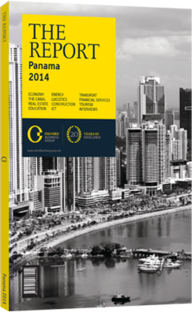Underground works: The first phase of the new metro system is set to be ready in 2014
Home to around one-quarter of the country’s population of 3.8m, Panama City, the capital, has been facing aggravating traffic congestion for some time. Strong economic growth has resulted in increased automobile purchases, domestic migrations from rural areas and a steady flow of international tourists and businessmen – all of which add pressure to the city’s transportation network.
Phase One Coming On-Line
Alleviating congestion within the capital through the construction of a new metro emerged early as one of the flagship projects of President Ricardo Martinelli’s administration. Progress has been rapid, with the first phase of the network– the $1.88bn line one – set to be completed in 2014, five years after the completion of preliminary studies in 2009. The first line of the metro will feature a total of 13 stations and 13.7 km of track – 7.2 km underground and 6. 5 km overground – running in a north-south direction through the capital. A special body was established in 2009 to oversee the planning, construction and administration of the metro called the Secretary of the Metro of Panama (Secretaría del Metro de Panamá, SMP). SMP awarded the contract to construct the first tranche of the metro to an international joint venture dubbed “Consorcio Linea 1” between two major infrastructure conglomerates in Brazil’s Odebrecht (55%) and Spain’s FCC (45%). Alstom was subcontracted to supply the 19 trains, each having three passenger cars, that will serve the metro’s first line. Each train can accommodate up to 900 passengers. Alstom has already delivered all 19 trains to Panama City. According to the SMP, the 19 trains operating line one at the outset will give it an initial capacity to move 15,000 passengers per hour, though expansion could see that figure grow to 40,000 passengers per hour by 2035.
Long-Term Planning
In fact, by 2035 the entire network could be significantly expanded if subsequent administrations continue to develop the SMP Master Plan, which calls for the construction of four additional lines, as well as a tram line servicing the Casco Viejo, Panama City’s historic downtown. Such a network would be capable of transporting approximately 278,000 passengers during peak hours such as rush hour from six to eight in the morning. On a daily basis the metro would have the capacity to move 1m passengers, which is equivalent to 50% of the demand for public transport in the metropolitan area, according to the SMP.
However, for the time being the construction of the first line of the metro is actually compounding the problem of traffic congestion in the city. A study conducted by the Panama Chamber of Commerce, Industry and Agriculture in 2012 found that the characteristic heavy traffic in the city, combined with congestion caused by subway construction, is currently causing local businesses to lose approximately $1m per day. Extrapolating the findings on an annual basis gives an indication of the size of the problem: at $365m per year, lost business costs due to Panama City’s current traffic congestion is equal to 1% of the country’s $36.25bn GDP, according to World Bank figures.
Get The Traffic Moving
Therefore, when line one becomes operational in March 2014 it should drastically improve traffic flows as it will service one of the most heavily trafficked routes in the city. Though the completion of line one of the Metro de Panamá will certainly help reduce congestion in the capital, eliminating the problem will necessarily involve overhauling the road network and improving the metrobus service as well, both issues which are also currently being tackled. How Panama City’s metro will look two decades down the road when the current master plan envisages a total of five lines will depend on a variety of factors, including the political will of subsequent administrations to expand the network and continued economic growth.
You have reached the limit of premium articles you can view for free.
Choose from the options below to purchase print or digital editions of our Reports. You can also purchase a website subscription giving you unlimited access to all of our Reports online for 12 months.
If you have already purchased this Report or have a website subscription, please login to continue.

